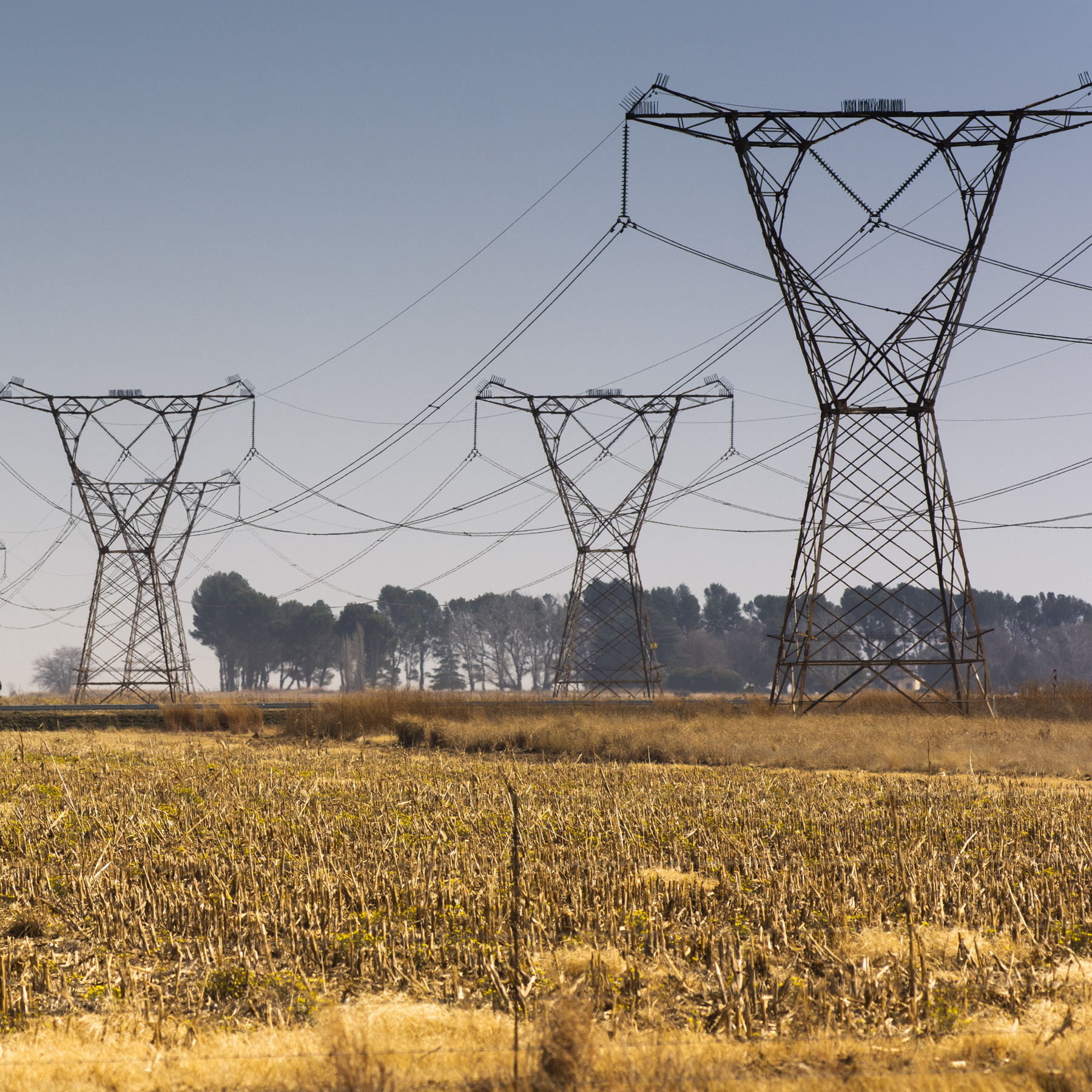Language
You can read the magazine in one of the following languages
Geolocation
You can read the global content or the content from your region

There is one name Zambia’s mining industry trusts above all others to power the mines of the Copperbelt, and that’s Copperbelt Energy Corporation (CEC).
For more than 60 years, the company has supplied power to this mineral-rich region along the northern border with the Democratic Republic of the Congo (DRC). In doing so, it has supported the growth of an industry that has become the country’s major economic activity. Today, mining accounts for more than 75 percent of Zambia’s foreign export earnings. The country is also Africa’s second-largest producer of copper, after the DRC.
CEO Owen Silavwe started his career with CEC as a young engineer, with the ink barely dry on his Bachelor degree in Electrical Engineering. “I was delighted to work in the field,” he tells The CEO Magazine. “I worked on designing power networks and network expansions. For me, that was very exciting.”
The year, 1997, was a landmark one for not only Silavwe but CEC as well. Until then the power division of Zambia Consolidated Copper Mines (ZCCM), the government’s privatization of the parent company saw CEC spin off into a separate entity that was quickly snapped up by a foreign consortium.
“This triggered a massive business transformation,” he explains. The first was around the power grid. Dating from 1951, it was starting to show its age. And his team was right in the thick of the action.

“When I joined, there were concerns about the network’s ability to sustain the demands of its customers,” Silavwe explains. “One of my first key tasks with the team I joined was to understand how the power network was designed, and therefore how we could try to build the network of the 21st century.”
It was a time when much of the business was shaken up and transformed. “There were a number of redundancies in terms of personnel; from 1,000 people we ended up with around 450 people,” he reveals. The shift from a state-owned to a privately held company also sent shockwaves through the company culture.
“The objective was to try and get everybody focused on the core business of the company, which was to use our network to deliver power to our customers. And to make sure we were doing that in a very efficient way.”
The business stabilized after a period of intense transformation. Silavwe, thirsty for new challenges, found himself promoted every few years into more senior roles across maintenance and implementation of projects. “That strengthened and expanded my knowledge in the engineering field and, indeed, how all power networks operate,” he says.
From there, the next step was business development. “That was quite a big change for me,” he reflects. “I went from dealing with wires and other network equipment to dealing with customer needs, their expansion requirements, and how the company could meet them viably as a business.”
The move did, however, offer him the opportunity to start interacting with the board of directors. Once on their radar, a move to the C-suite quickly followed. “I became the Director of Business Development and then COO until I rose to my current role as CEO in 2014,” he recalls. He also serves as an Executive Director on the CEC board.
As Silavwe progressed through the ranks at CEC, he experienced further business transformation. In 2006 the foreign consortium made the decision to divest out of CEC, selling its stake – 77 percent – to the Zambian Energy Corporation (the government continued to own the remaining 23 percent through CM Investment Holdings).

“We’ve created very important and useful partnerships with other utilities through our membership. These relationships have allowed us to buy power, which we now take to our various companies.”
“Based on the funding structure the new owners had used, they had committed to list CEC on the stock market,” he confirms. True to their word, in 2008 CEC had its IPO on the Lusaka Securities Exchange.
Less than a decade after the first period of intense transformation, Silavwe and his colleagues were facing another. “This was quite an important time because we needed to start conforming to the requirements of a listed company,” he says. “We had to cater to a much broader investor community and needed to restructure ourselves to deal with investor issues.”
Around the same time, CEC became a member of the Southern African Power Pool (SAPP), a Zimbabwe-based organization that “operates a market for power”, as Silavwe describes it. “The key task is to try and move to a more competitive market,” he says. “Having come from the private sector we’ve been a big part of that, so we were obviously happy to join this group and work with the rest of its members on this journey.”
Today, CEC is one of the largest power traders of the SAPP. “We’ve created very important and useful partnerships with other utilities through our membership,” Silavwe points out. “These relationships have allowed us to buy power, which we now take to our various companies.”
For Silavwe, CSR is one of the key measurements of success in his role. “Climate is one of the big issues for me as CEO,” he explains, pointing to CEC’s tree planting program as a signature initiative. “This country has a number of rivers, and under this program we’re doing our best to contribute in the small way we can to restoring rivers, by planting trees around all the important river sources in areas where we operate.”
Another important CSR focus has been supporting the nation’s youth. “This is the future generation of CEC employees, so if we can support their wellbeing and education, then we’re supporting our future team.”
CEC’s power grid – and the supply of power to a number of mines in Zambia’s Copperbelt – continues to be at the center of its business model. “It’s a network located in the northern part of the country and is worth around US$1.1 billion,” Silavwe explains. This proprietary power network plugs into the national grid, operated by the state-owned Zambia Electricity Supply Corporation (ZESCO).
The arrangement has allowed CEC to build what he describes as “a robust portfolio of power” from various sources.
“We generate about 10 percent of power ourselves,” he explains. “The remaining 90 percent we buy from a combination of the state utility, where we source the bulk, and a smaller portion that we buy from independent power producers.”

“When you look at it, the business has transformed from where we came from.”
CEC’s scope of operations has expanded beyond the boundaries of the grid, however: to transmission services (“using our transmission to move power for third parties, including ZESCO”, Silavwe says) and across country borders.
“We are now supplying power to regional customers, particularly the copper mines located in the DRC,” he reveals. “We call this regional power trading and we aim to continue to grow this branch of the business.”

This geographic expansion has created another business area. “We now own interconnections between Zambia and the DRC,” Silavwe adds. “Apart from just moving our own power and supplying to our customers in the DRC, we can also use these interconnectors to move power on behalf of third parties. And they’ll pay us for the service we provide.”
To capitalize on the potential of this move into the DRC, a local subsidiary called CCDRC was established four years ago. “CCDRC is focused on acquiring new customers and earning a market share in terms of supplying power to DRC customers,” he says.
Silavwe is now in a position to reflect on the diversification he has helped drive. “When you look at it, the business has transformed from where we came from,” he says.
Yet there’s no chance Silavwe will be slowing down any time soon. “We are obviously quite keen on growing our power portfolio,” he states. And as the Zambian government makes clear its objectives to grow the country’s energy mix, CEC is determined to play a critical role.
“We’ve launched our foray into renewable energy,” he says. “From an energy transition agenda perspective, we’re playing our role as far as integrating renewables is concerned.”
In addition to its first solar power plant – the one-megawatt Riverside Solar Power Project in the Copperbelt, which was commissioned in 2018 as the country’s first grid-connected solar power plant – Silavwe reveals that the company is currently implementing its second project, set for completion in November 2022. “Once this is complete we will have integrated about four megawatts,” he says.

“We’re very happy to play such an important role in supporting our customers as they move towards net zero.”
Along with solar energy, CEC has invested in other renewables, including fossil fuel alternatives and hydroelectric power. As owner and operator of a biodiesel production plant, the company can currently produce 900,000 liters annually of an environmentally friendly and low-cost fuel made using jatropha (an oil-bearing plant) and soya bean seed oil as primary feedstock.
A proposed hydropower scheme, the Kabompo Hydro Power Project, is the company’s first foray into greenfield hydroelectric power generation, with a proposed underground power station capable of generating 40 megawatts. A 35-kilometer transmission line will connect it to the national grid.
As well as easing potential national power shortages, the scheme will benefit mines in particular as it provisions for emergency power supply. The program is also set to create jobs and bring other socio-economic benefits to the local communities in Zambia’s North-Western Province.
For Silavwe, these renewable energies are a crucial addition to CEC’s power generation portfolio, not only for its internal ambitions – he hopes the company can achieve net zero operations by 2028 – but also for its customers. “They are also working through their programs to reach net zero in their business,” he explains. “Obviously, the power that we provide to them is one of the critical ingredients.
“It’s a conversation we are having with all our customers. We’re very happy to play such an important role in supporting our customers as they move towards net zero.”
Below is a snapshot of CEC’s four key business segments.
Local power supply: In addition to supplying power to the Copperbelt mines, CEC delivers additional services including emergency or backup power.
Regional power trading: Partnerships with regional and SAPP suppliers enable CEC to buy power, much of it destined for mining companies in the DRC’s Katanga region.
International wheeling. Thanks to its own infrastructure, CEC can transmit power for third-party utilities. Of particular importance is its Zambia-DRC interconnector, the only transmission link connecting the DRC and Southern Africa.
Domestic wheeling. CEC’s transmission and distribution network allows Zambia’s national electricity utility, ZESCO, to transport power from one point on the national grid to another.
As the energy landscape grows increasingly competitive, Silavwe believes excellence is what sets CEC apart in the market, “particularly when it comes to service delivery to our customers.”
Not only does this speak to how the company manages its networks and provides customers with what they need – namely, power – but also to how it listens to, and understands, what those customer needs are. “That’s something we pay a lot of attention to and transform those learnings into action,” he notes.
People are also integral to CEC’s success. “We are a business that is focused on developing strong, professional teams,” he insists. That means ensuring the best people are rewarded, and that talent is offered every tool and opportunity to continue with learning and development, which is particularly imperative in a knowledge-based field such as power where “things tend to move very quickly”.

“It’s important that all our employees embrace new ideas, whether we are talking about innovation or finding new ways to do things.”
To ensure ongoing success, Silavwe has identified four key values. These are at the heart of everything the company does. The first is honesty, which he says “speaks to integrity and ethical behavior at all times”.
The second is teamwork. “We believe it’s very hard to succeed in business if you don’t work as a team,” he says. “Both within your team, and also seamlessly across teams.”
The third value is being open to new ideas. “It’s important that all our employees embrace new ideas, whether we are talking about innovation or finding new ways to do things.”

“We are quite focused on the things we set out to do and ensure we remain focused on the end product we are trying to achieve.”
The last key value of the business is the development of a can-do attitude. “If we work together as a team, nothing is impossible,” he enthuses. “That really surmises what we believe as a business. We are quite focused on the things we set out to do and ensure we remain focused on the end product we are trying to achieve.”
And to ensure these values are embedded, Silavwe appreciates that he and his leadership team are role models for the rest of the company. “We make sure we’re holding each other accountable to basically live the values of the business,” he says.
He knows a culture can’t be created overnight but he’s delighted with the progress that has been made under his leadership. “We’re on a path to building a business culture that is focused on performance, and I’m happy with what we’ve been able to achieve during the time I’ve been CEO at CEC.”